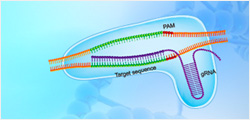| Species |
Human |
| Protein Construction |
OSMR beta&GP130 (Glu28-Met740(OSMR)&Glu23-Glu619(GP130))_x000D_
Accession # Q99650-1(OSMR beta)&P40189-1(GP130) |
His |
Flag |
| N-term |
|
C-term |
|
| Purity |
> 95% as determined by BisTris PAGE
> 95% as determined by HPLC |
| Endotoxin Level |
Less than 1EU per μg by the LAL method. |
| Biological Activity |
Measured by its binding ability in a functional ELISA. Immobilized OSMR beta&GP130, His & Flag, Human at 0.5μg/ml (100μl/Well) on the plate can bind AntiOSMR Antibody, hFc Tag. Test result was comparable to standard batch. |
| Expression System |
HEK293 |
| Theoretical Molecular Weight |
82.2 kDa(OSMR beta) and 68.83 kDa(GP130) |
| Apparent Molecular Weight |
Due to glycosylation, the protein migrates to 100-140 kDa based on Bis-Tris PAGE result. |
| Formulation |
Lyophilized from 0.22μm filtered solution in PBS (pH 7.4). |
| Reconstitution |
Centrifuge the tube before opening. Reconstituting to a concentration more than 100 μg/ml is recommended. Dissolve the lyophilized protein in distilled water. |
| Storage & Stability |
Upon receiving, the product remains stable up to 6 months at -20 °C or below. Upon reconstitution, the product should be stable for 3 months at -80 °C. Avoid repeated freeze-thaw cycles. |
| Target Background |
OSMR&gp130 is a type II receptor for OSM in humans. OSM can alternatively bind to a heterodimer of gp130 and LIF-R or of gp130 and OSMR (OSM receptor). On the basis of in vitro studies, the OSM ligand recruits a broader array of cell signaling pathways than most gp130 cytokines. OSMR and gp130 chains are widely expressed in connective tissue cells and tumor cells. |
| Synonyms |
OSMR&GP130; OSMR; GP130; IL-31 receptor subunit beta&GP130; IL-31R subunit beta&GP130; IL-31R-beta&GP130; IL-31RB&GP130; OSMRB&GP130 |
For research use only. Not intended for human or animal clinical trials, therapeutic or diagnostic use.




































